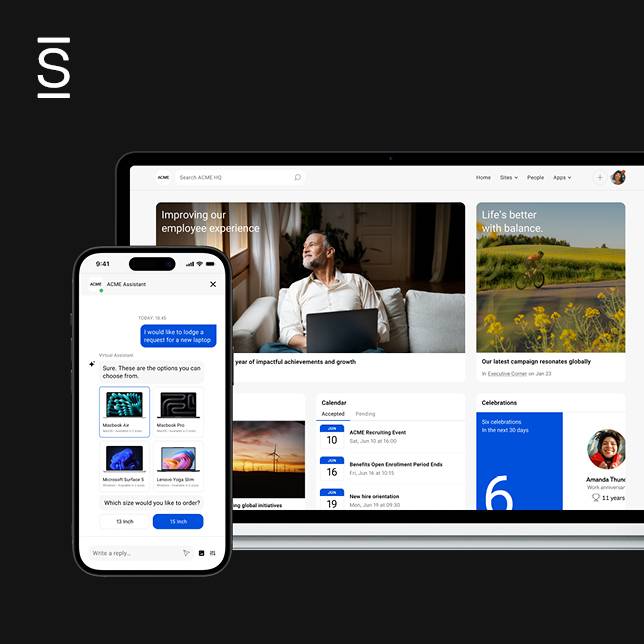Definition
As competition intensifies across various industries, businesses increasingly focus on providing a great customer experience. Customer experience is now one of the key differentiators between successful and unsuccessful companies.
In 2016, McDonald’s launched a campaign tagged Create Your Taste, a self-ordering kiosk to empower customers to satisfy their taste. And they did. Why was it a hit? There are a number of reasons, which we’ll explore below as we uncover the ins and outs of customer experience.
It’s a complex concept that is extremely influential when it comes to business growth. Regardless of what size of business you run, and if it’s an e-commerce platform, a brick-and-mortar shop, a media channel, or a grocery store—a top-notch customer experience is a must.
When you prioritize your customers and consider their needs, every action can improve customer experience, from attaching an umbrella to a grocery truck to prevent heatstroke to offering visitors a refreshing glass of water in your furniture store.
In this article, you will discover what customer experience means, why it is essential, and how businesses can improve it. We will also discuss the difference between customer service and customer experience and provide examples of both good and bad customer experiences.
- 1 What is customer experience?
- 2 Benefits
- 3 Critical components of customer experience
- 4 Customer service vs. customer experience
- 5 Examples of good customer experience
- 6 Top companies known for exceptional customer experience
- 7 Examples of bad customer experience
- 8 Examples of companies known for providing poor customer experience
- 9 The customer experience journey
- 10 Key touch points of the customer experience journey
- 11 How to improve customer experience
- 12 Tips for creating a positive customer experience
- 13 How to measure customer experience
- 14 Who is responsible for customer experience strategies?
- 15 Good employee experience shapes the customer experience
- 16 Conclusion
What is customer experience?
The customer experience (CX) refers to a customer’s overall impression of a business based on the sum of their interactions. These interactions can include direct contact with the company, such as purchasing a product or calling customer service, or indirect interactions, such as word-of-mouth referrals and online reviews.
Due to the unpredictable nature of how customers behave, respond, and react, managing customer experience can be a challenge for companies. However, the most effective approach is for companies to evaluate and improve every customer touchpoint. At the very least, this increases the likelihood of customer satisfaction. A company can’t completely control its customers’ experiences, after all, but it can influence them.

CX is made up of three components:
- Interactions: Interactions are customers’ contact with a business, including online and offline interactions. These touchpoints can occur during the prepurchase, purchase, and post-purchase stages.
- Emotions: Emotions refer to the feelings that customers experience during these activities. These sentiments can be positive or negative and significantly impact a customer’s overall impression of a business.
- Perceptions: Perceptions refer to the customer’s beliefs and attitudes about a business, which are influenced by their interactions and emotions.

Customers’ perceptions and feelings about a company are based on the customer journey, which encompasses the entire duration of a customer’s relationship with a company. This journey begins even before purchase, continues through the purchase of the product or service, and culminates in renewal or repeat purchases. This overall experience starts with the first interaction with the company and progresses through every touchpoint along the way.
Benefits
Standing out amongst competitors is easier when a company has a positive consumer perception. This is particularly true when companies provide a service or product that exceeds expectations. A positive customer experience has numerous benefits actually, including:
- It can increase customer loyalty, as customers are more likely to return to a business with which they have had a positive experience.
- Great customer experience can lead to positive word-of-mouth marketing, as customers are more likely to recommend a business with which they have had a positive experience to their friends and family. In other words, your customers can become your best brand ambassadors.
- It helps you better understand your customers and improves your brand value.
- A positive customer experience can lead to revenue growth, as customers are more likely to make repeat purchases and spend more money when they’ve had a positive experience with a business.
Companies that have successfully differentiated themselves through exceptional customer experience include Amazon, Apple, Coca-Cola, and Zappos. These companies have built their brands around providing an excellent customer experience. As a result, they have become leaders in their respective industries.
Critical components of customer experience
These four components provide a comprehensive understanding of the quality of customer interactions and how to enhance them.
- A customer-centric culture: Establishing a company culture that fosters a sense of ownership and shared responsibility toward creating positive customer experiences is crucial.
- Well-designed touchpoints: Creating a great perception is easier when the approach is organized.
- Consistent quality: Consistently delivering value to customers cultivates favorable CX.
- Customer satisfaction: Customer satisfaction is a good indicator of overall CX.
Customer service vs. customer experience

Customer service refers to the support and assistance a business provides about its products to its customers and the skills that come along with it. It is one component of customer experience, but it is not the same thing. Customer experience refers to the broader spectrum of what happens during the customer journey.
While customer service can impact the customer experience, it is not the only factor determining a customer’s overall impression of a business. Customer experience involves customers’ emotions, judgments, and reactions to the company or its services. And 84% of companies that work to improve their customer experience report increased revenue.
Conversely, customer service covers only the exchanges between customers and a company’s staff, mainly customer support agents, that transpire before and after a sale. These exchanges are facilitated via corporate communication platforms like live chat, social media, phone calls, chatbots, and email. The primary objectives of customer service are to assist customers in making informed product selections and resolving issues that may arise.
Examples of good customer experience
Given the high stakes involved, companies must consider whether they’re providing an excellent customer experience that fulfills customers’ evolving needs or not. To come close, companies should offer the following:
- Prompt response: A company that responds quickly and efficiently to customer inquiries or concerns leaves shouldn’t be a differentiator, but it is. Having an organized and timely approach is important.
- Personalized service: Tailoring the customer experience to the individual can go a long way in creating a positive experience. Personalized services can include remembering a customer’s name and preferences or providing personalized recommendations.
- Going the extra mile: Companies that go above and beyond to solve a customer’s problem or meet their needs will leave a lasting impression. Making a note to follow up after a challenging experience helps customers feel seen and keeps your company top-of-mind for future engagements.
- User-friendly technology: As companies undergo digital transformation, they must not lose sight of usability. Technology that is easy to use and improves the customer’s experience can make a big difference. For example, an online shopping site with a simple and intuitive interface is essential. Clunky experiences do not entice repeat purchases.
- Creating a positive atmosphere: The overall environment or atmosphere can impact a customer’s experience. A positive atmosphere can include things like the physical space, music or background noise, and the behavior of the employees. A positive atmosphere can make customers feel more comfortable and at ease.
Top companies known for exceptional customer experience
- Amazon: Achieves its customer-centric approach and fast delivery times by investing heavily in its logistics and delivery infrastructure, leveraging technology such as AI and automation to optimize its operations, and offering an extensive line of products and services to meet diverse customer needs. Amazon is ranked first among all e-commerce companies, scoring 82 out of 100 by the American Customer Satisfaction Index (ACSI).
- Apple: Sleek and user-friendly technology and first-rate customer service result from its focus on design and innovation, investing in research and development to create cutting-edge products, and providing extensive training and support to its employees to deliver exceptional service.
- Disney: Disney has built its brand around providing customers with a magical and memorable experience in its theme parks, movies, and other media. Its customer experience in the parks is second to none, except for its wait times, of course!
- Netflix: Personalization tailors marketing materials to a customer’s preferences or behaviors, which can improve CX, increase sales, and enhance brand loyalty. Netflix uses personalization to recommend media based on user ratings, improving accuracy with more input. They also give out cinematic gift packs to their loyal customers with lovely notes yearly.
Examples of bad customer experience
64% of customers want companies to adjust rapidly to their changing needs as often as possible, and there is a high possibility of losing customers if companies fail to adapt. Here are some areas that require immediate attention at struggling companies:
- Long wait times: Customers may become frustrated and dissatisfied when they wait on hold for extended periods or experience long wait times in the store.
- Poor communication: When a company needs to communicate effectively with a customer, not doing it appropriately can create confusion, frustration, and dissatisfaction.
- Product/service issues: When a product or service does not work as expected, or there are issues with quality or delivery, this can create a negative experience for the customer.
- Rude or unhelpful staff: Employees who are unprofessional, unhelpful, or harsh to customers can create a negative experience.
- Lack of personalization: When a company fails to personalize the customer experience, they never develop a true connection with the brand and will be quick to explore other offers that come along.
Examples of companies known for providing poor customer experience
- United Airlines: In 2017, United Airlines came under fire when they forcibly removed a passenger from a flight, resulting in widespread backlash and negative publicity. Though today, this has become a common occurrence, back then it was viewed as excessive.
- Comcast: Comcast has a reputation for poor customer service, with customers frequently experiencing long wait times, service outages, and unhelpful support representatives.
- Uber: Uber has faced criticism for lack of transparency, poor treatment of drivers, and reports of sexual harassment and discrimination within the company.
- Wells Fargo: Wells Fargo faced a major scandal in 2016 when it was revealed that employees had opened millions of fake accounts without customers’ knowledge or consent, leading to significant financial harm for many customers.
The customer experience journey
As noted, the customer experience journey refers to the various touchpoints that a customer interacts with, from pre-purchase to post-purchase. These touchpoints can include online and offline interactions, such as browsing a website, engaging with ads, and direct relations with services from a brand.

Key touch points of the customer experience journey
Here are six key touch points the customer experience journey may include:
- Awareness: How the customer first becomes aware of the company. The customer may become aware of a company through social media, advertising, or word-of-mouth.
- Consideration: The customer begins considering your company as a solution to their problem or need. Customers may even research options on a company’s website or physical store.
- Purchase: The customer decides to purchase from your company. Customers may interact with sales representatives or make a purchase online.
- Onboarding: The customer receives information on how to use the product or service they purchased. They may also interact with customer service to resolve issues or leave feedback.
- Post-purchase interactions: The customer may require support for their purchased product or service or see communications from or about your company.
- Loyalty: Over time, if the customer continues to purchase from your company, they may become a brand advocate.
Understanding the customer experience journey is essential to design and deliver a seamless experience. By mapping out the touch points and identifying areas where the experience could be improved, you can create a positive experience that meets your customers’ needs or even exceeds their expectations.

How to improve customer experience
Improving customer experience is an ongoing process that requires a profound understanding of customer needs and preferences. In the quest to enhance the customer experience, there are several vital elements to consider:
- Personalization: Customers want to feel valued and that the company understands their needs. Personalization can create a more tailored experience that meets their individual needs. This could include personalized product recommendations or personalized messaging.
- Convenience: Customers value comfort and want to interact with companies in the most convenient way. This could include offering multiple channels for support, such as phone, email, and chat, or providing self-service options.
- Empathy: Customers want to feel like the company they engaged with listens and that their concerns are being addressed. Compassion can help to create a more human connection and build trust. This could include actively listening to customer feedback and responding promptly and empathetically.
To create a positive customer experience, companies should listen to customer feedback, empower employees to solve problems and utilize technology to enhance the experience. By investing in customer experience, companies can build a loyal customer base and drive long-term growth.
Tips for creating a positive customer experience
- Listen to customer feedback: Customer feedback is a valuable source of information and can help to identify areas where the experience could be improved.
- Empower employees to solve problems: Empowering employees and focusing on employee engagement inspires workers to solve problems. It can also lead to a more responsive and personalized experience from employees. When employees feel a sense of ownership and pride in their company, they want to ensure its perception is good.
- Utilize technology to enhance the experience: Technology can help to create a more convenient and efficient experience. This could include chatbots for support or personalized messaging that’s triggered based on various behaviors or purchases.
How to measure customer experience
Measuring the customer experience is vital to identify areas for improvement and for tracking progress over time. There are several standard prescriptive analytics metrics for measuring the customer experience, including:
- Net promoter score (NPS): This measures the likelihood of a customer recommending your company to others.
- Customer satisfaction (CSAT): This measures the customer’s satisfaction with a particular interaction or experience.
- Customer effort score (CES): This measures the ease of a customer’s experience with your company.
By collecting customer feedback and measuring these metrics, you can identify areas for improvement and track progress over time.
Who is responsible for customer experience strategies?
In short, everyone! In the past, CX was often limited to the CMO or COO’s responsibilities, with different departments operating independently and with their own priorities. CX thinking is now found in every department and not the domain of siloed customer-facing job functions.
We see everything from product development gathering market research on ease of use and making better widgets to logistical planners considering how last mile operations can be improved to enhance delivery experiences. It’s all relevant.
Each department has its own goals and metrics, often working independently of the rest of the company. Companies are breaking down these silos and organizing their internal operations in new ways to better serve changing consumer needs.
Good employee experience shapes the customer experience
Good employee experience can significantly impact the customer experience. Engaged and motivated employees are much more likely to create a positive brand experience for customers. It makes sense. When employees are valued and feel a strong sense of belonging, they want the perception of this home away from home to be positive when others interact with it as well.
No one wants to work at a place where customers constantly trash it online. Employees that have exceptional experiences in the workplace are strong advocates for the company. And that kind of word-of-mouth promotion is worth more than any amount of ads the company can place. Reviews from customers are the most valuable earned media around, followed closely by employee reviews. Companies need to strive to have both.
Creating an exceptional employee experience calls for the same kind of thinking but looking internally. Employees are customers in a sense as well. And they crave growth opportunities and understanding. This could include training and support, childcare benefits, work-life balance and incorporating other employee value propositions.
Check out our blog to learn how good employee experience can create a better customer experience
Conclusion
Providing a positive customer experience is critical for business success. Creating personalized, convenient, and empathetic understanding can differentiate your company and build customer loyalty. It’s essential to understand the customer experience journey, identify areas for improvement, and measure progress over time.
A good employee experience is the surest way to improve customer experience. When employees are engaged, motivated, and have the tools and resources required to do their job, they are more likely to provide exceptional customer service and deliver a positive customer experience.
At Simpplr, we understand the importance of providing a seamless customer experience. Our intranet platform is designed to improve employee engagement, collaboration, and productivity, ultimately leading to a better customer experience. Reach out and we’ll show you how it looks in action!

Watch a 5-minute demo
See how the Simpplr employee experience platform connects, engages and empowers your workforce.
- #1 Leader in the Gartner Magic Quadrant™
- 90%+ Employee adoption rate






